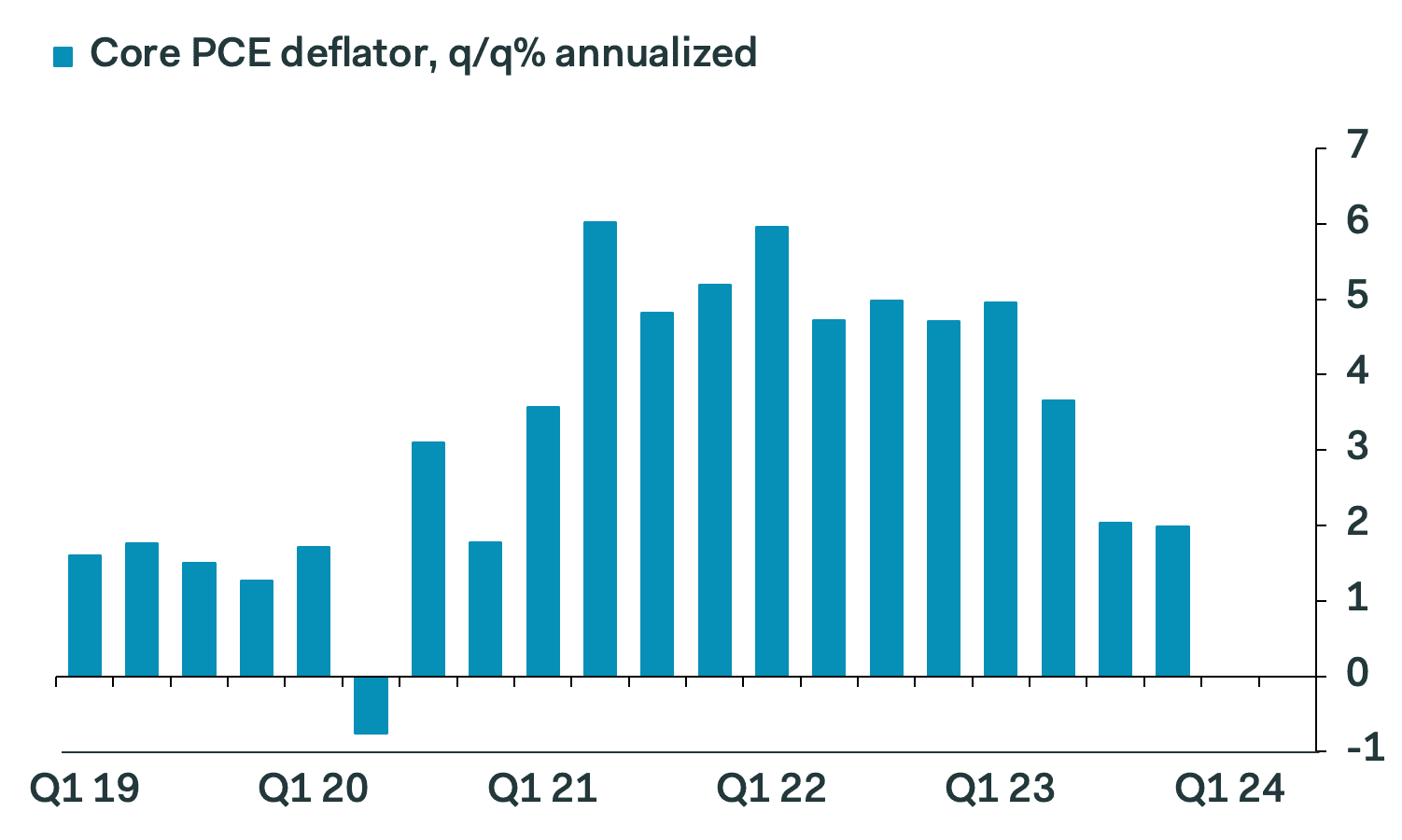Strong Economy Means Federal Reserve Rate Cut Only Likely in Q3: Economists
- Written by: Sam Coventry
-

Image © Adobe Images
The U.S. economy ended 2023 in a far stronger position than markets were expecting and analysts say this makes the likelihood of a Federal Reserve rate cut before the third quarter highly unlikely.
The economy expanded 3.3% quarter-on-quarter on an annualised basis in Q4, down from Q3's 4.9%, surpassing the market's estimation for 2.2% growth.
The data reveals strong consumption as being behind the outturn, with increases in discretionary consumption, including restaurants and recreational goods.
Export growth, led by petroleum products, and state/local government spending were also leading contributors to growth.
"Those hunting for clues that the Federal Reserve is ready to take an axe to interest rates will be sorely disappointed," says Sophie Lund-Yates, lead equity analyst at Hargreaves Lansdown. "The US economy has shown remarkable resilience in the face of higher interest rates and soaring inflation."
Lund-Yates says the consumer is pushing the economy forward despite "a stark burn-rate on excess savings and sharp jumps in the amount people are paying on personal loans, rather than mortgages."
Nevertheless, this won't be sustained, says Lund-Yates, who sees ongoing evidence that the U.S. economy is "coming off the boil" with a deceleration in the speed of growth.
"A low saving rate, reduced credit availability, and a slowdown in the labour market all portend slower growth ahead, but with GDP still being well above potential growth, this underscores our expectation for the Fed to hold off on cutting rates until Q3 2024," says Katherine Judge, an economist at CIBC Bank.
The Dollar was relatively flat following the numbers, suggesting the data is not enough to move the needle on existing expectations for the outlook of Federal Reserve policy.
Elsewhere, U.S. jobless claims surprised at 214K, exceeding the estimate for 200K, but Ryan Brandham, Head of Global Capital Markets for North America at Validus Risk Management, says this deviation can be attributed to an anomaly in the series.
"The overarching trend remains strong," he says. "The U.S. job market remains resilient, and it would take a series of higher results to change this narrative."
Given the strength in the U.S. economy, Validus Risk Management, says the Fed may struggle to cut interest rates in 2024.
But Ian Shepherdson, Chief Economist at Pantheon Macroeconomics, says if you are only looking at GDP and jobless claims today, you are missing the big picture.
Image courtesy of Pantheon Macroeconomics.
Also released alongside GDP is one of the Federal Reserve's favoured measures of inflation: the core PCE deflator.
This gauges inflation on the personal consumption level, and it rose at a sub-2.0% 1.99% in the final quarter.
This follows the 2.04% of the third quarter.
"So the Fed has now hit its target on this measure on a sequential basis for two straight quarters. Note too that the 1.5% increase in the GDP deflator is the smallest since Q4 2019," says Shepherdson.
Pantheon Macroeconomics predicts the 2% trend in the core PCE deflator will persist, and if markets and the public expect inflation to remain at the target, leaving the economy with 3-1/4% real short rates.
"No one thinks that is sustainable, so the Fed will have to ease unless they have very good reasons to think the economy is about to re-strengthen or inflation somehow will rebound," says Shepherdson.
"We doubt those arguments can be made with confidence, so we expect the first easing in March or May, leaning 60/40 in favor of the former," he adds.

